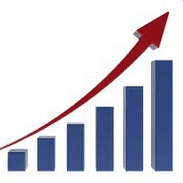
The Reserve Bank of Australia (RBA) yesterday released its monthly chart pack.
The Pack (provided in full below) has 16 categories covering the state of the Australian and world economies, via diverse metrics and observations.
I have reorganised the key charts as follows.
Economic growth and employment:
The main (but flawed) measure of economic progress is the growth in Gross Domestic Product (GDP).
Here is GDP in the “world” economy and Australia’s major trading partners (namely, China, Japan, Korea, and India):
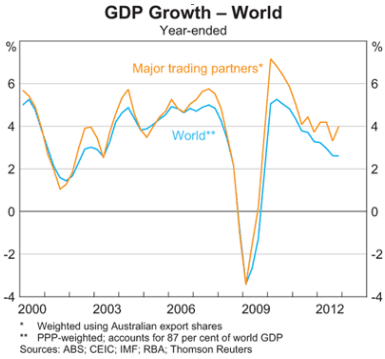
And Australia’s own real GDP, which is growing at around 3%, but has trended down over the past few quarters:
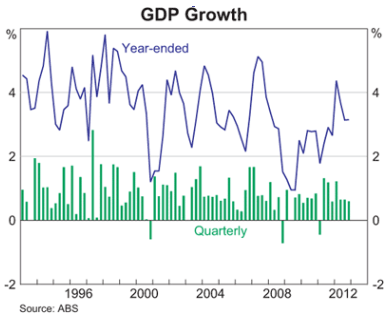
Even more important for welfare is the unemployment rate, which is improving in the US and Japan, but worsening in the Euro Area:
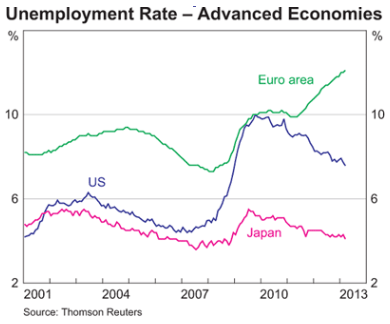
Australia’s unemployment rate looks good by comparison. Although as is the case elsewhere, it has recently been held down by falling labour force participation:
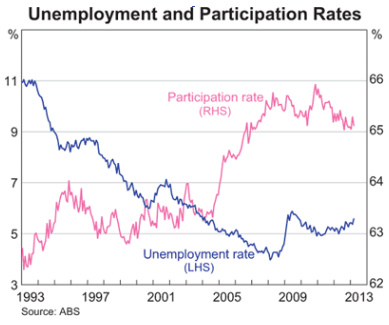
Growth in employment and aggregate hours worked remains fairly weak:
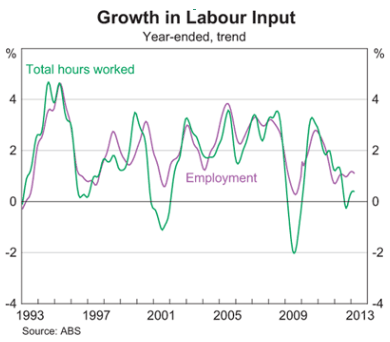
Jobs vacancies have fallen sharply:
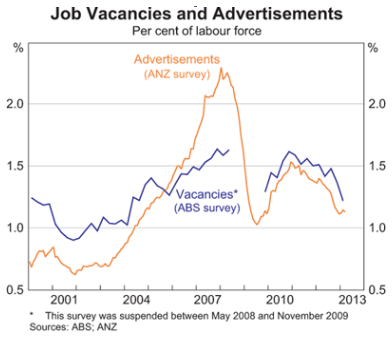
And wages growth is subdued:
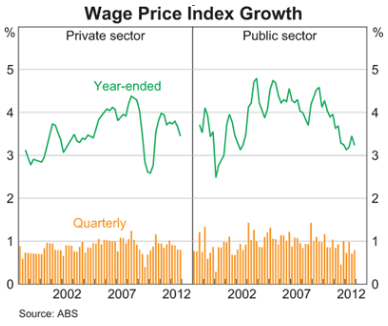
On the positive side of the ledger, labour productivity is improving:
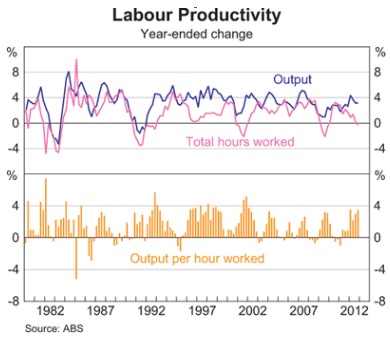
Commodities and China:
The key recent driver of the Australian economy is mining: both the prices received for our resources exports (e.g. iron ore, coal, natural gas, and gold), as well as surging mining-related capital expenditure (capex).
Commodity prices literally exploded between 2003 and 2011, but have since retraced somewhat:
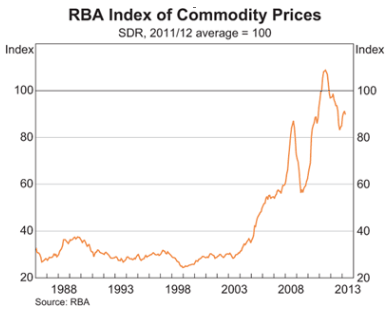
This retracement in commodity prices since 2011 has been driven by falls in Australia’s two major exports – iron ore and coal (both thermal and coking):
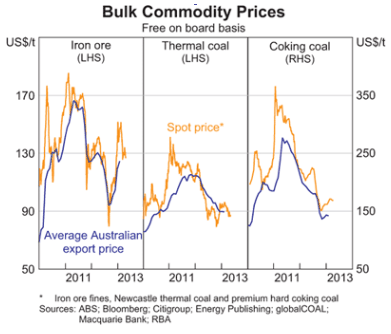
Accordingly, the terms-of-trade (export prices relative to import prices) has fallen from 140-year highs, although it remains highly elevated:
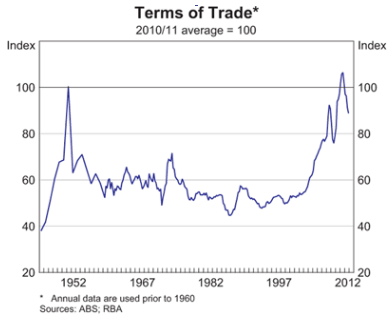
This fall in the terms-of-trade has major implications for national disposable income, which has declined recently in per capita terms.
The huge surge in commodity prices between 2003 and 2011 encouraged mining companies to ramp-up investment in a bid to increase commodity supply and profit from the rising prices. Mining capex rose from around 1% of GDP in 2003 to roughly 7% of GDP currently, and is expected to peak later this year and then decline going forward:
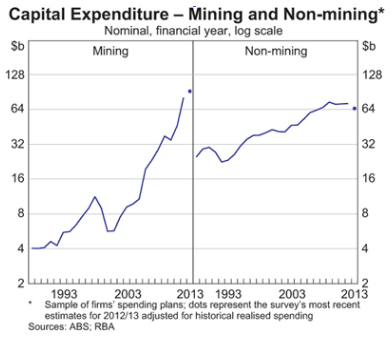
The volume of commodity exports has also been increasing as new mines have come on line and capacity has increased:
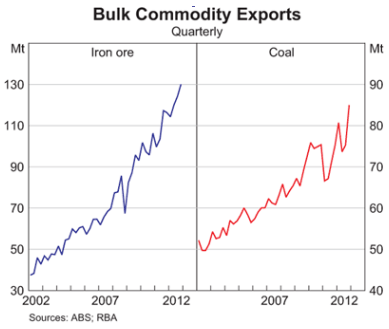
Looking ahead, the biggest risk facing the Australian economy is a disorderly unwinding of the mining boom, namely a sharp fall in commodity prices and a faster than expected decline in mining capex. With mining-related activities accounting for roughly 18% of gross value-added and 10% of employment, such and outcome would subtract significantly from national incomes and employment, while also damage government finances via lower company taxes, reduced resource rents, and higher outlays (e.g. unemployment benefits).
The strength and composition of the Chinese economy will play a big role in determining whether the mining boom unwinds gently or in a disorderly manner.
China is Australia’s biggest export market (~30% share), and the major buyer of Australia’s biggest export commodity, iron ore (~25% share of total exports):
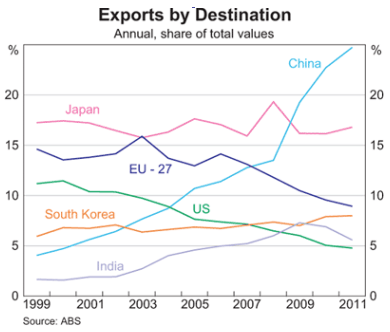
While Chinese GDP growth bounced in Q4 2012 on the back of renewed stimulus and rapid credit growth, Q1 2013 disappointed:
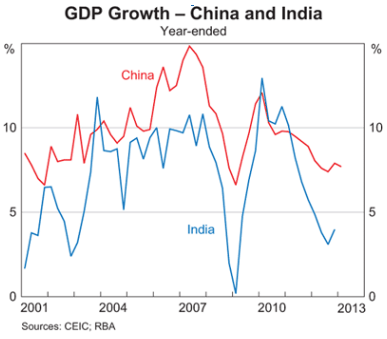
More important from Australia’s perspective is the level of fixed asset investment (FAI) in China, which consumes the lion’s share of Australia’s iron ore and coking coal exports. The Chinese economy is currently far too dependent on FAI to drive growth, and the authorities are seeking to rebalance the economy towards consumption-led growth, which is necessarily less commodity intensive.
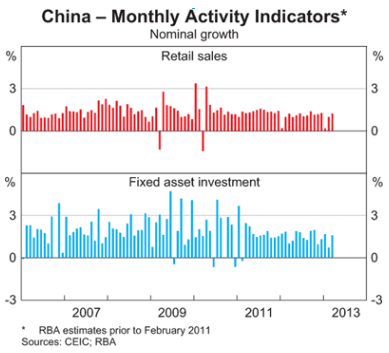
One area of FAI that is looking increasingly unstable is China’s property market, where prices look to be in a bubble and there is massive overcapacity (i.e. empty apartments and dis-used floor space). At some point, property construction will need to slow, which will weigh on Chinese commodity demand (just as Australian supplies have expanded):
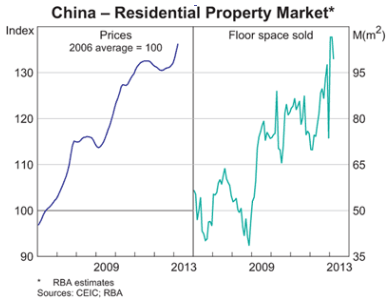
Households and Credit:
The growth in household debt was a key driver of the economy until the onset of the Global Financial Crisis (GFC), but has since lost momentum as household savings rates returned to long-run norms:
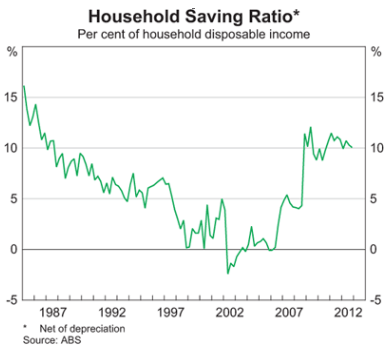
Credit growth has slowed:
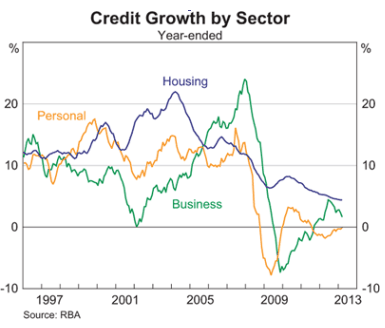
And the level of debt to disposable income has flatlined:
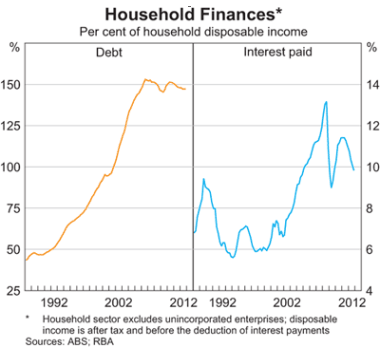
Nevertheless, the stock of debt is so high that households are still shelling-out around 10% of their disposable income on interest repayments – higher than when mortgage rates peaked at 17% in 1989/90 – despite interest rates near record lows (note the below chart doesn’t include Tuesday’s 0.25% official interest rate cut):
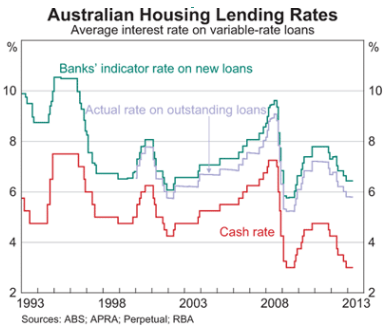
The lower credit growth environment is having a negative impact on retailers, with sales growth running at lower levels than the pre-GFC norm:
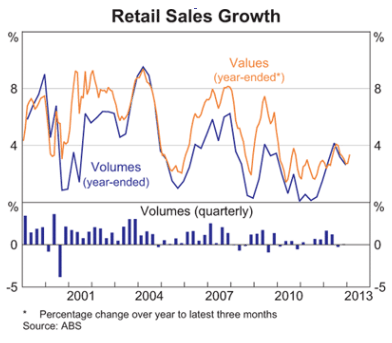
There are some green shoots, however, with consumer sentiment improving:
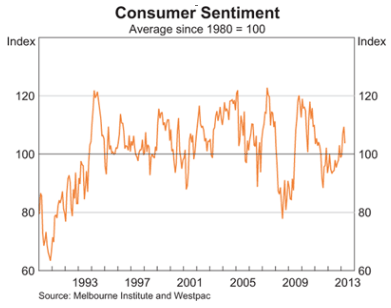
Housing finance approvals are rising off a low base on the back of investors (although first home buyers have withdrawn):
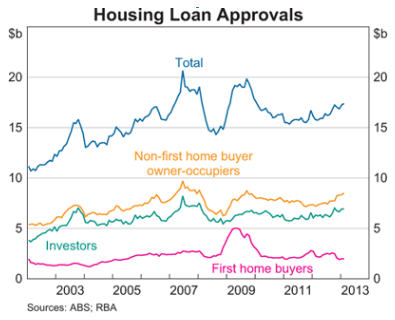
Dwelling approvals have improved on the back of an apartment surge:
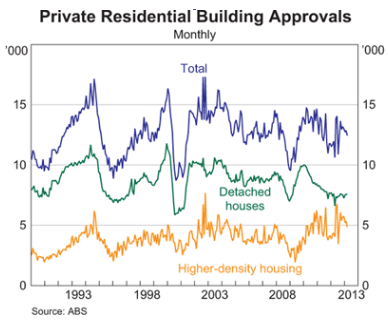
And household wealth is recovering due to rising asset prices:
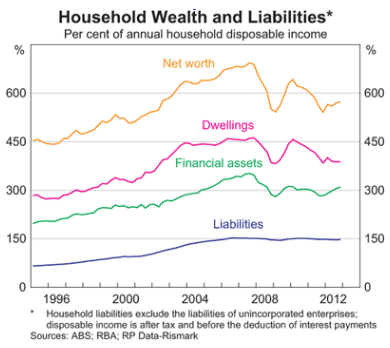
Businesses:
While the household sector is showing some improvement, the same cannot be said for businesses, which continue to deleverage:
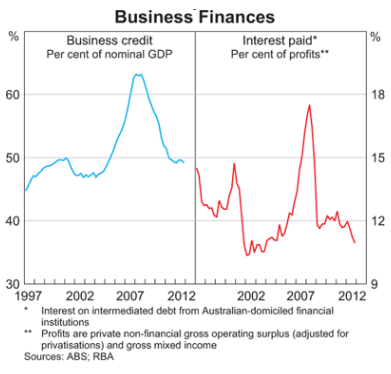
And business conditions, confidence, and capacity utilisation are in the toilet:
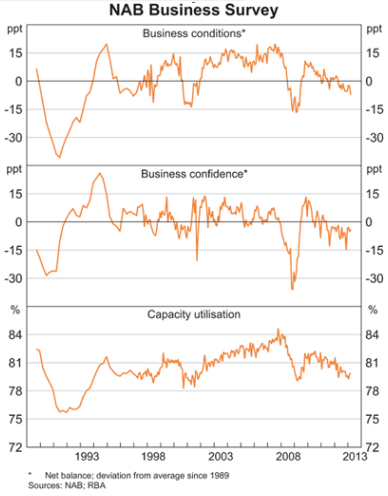
For now at least, Australia remains a houses & holes economy, with mining and financial services (banking) dominating the ASX, and industrials having lost relevance:
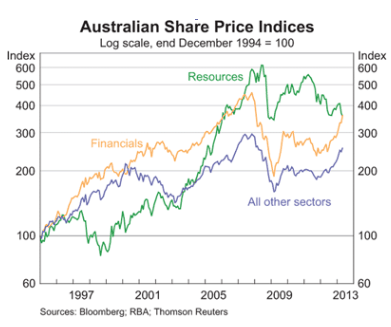
Inflation:
Underlying inflation is low currently, leaving further scope for the RBA to cut interest rates:
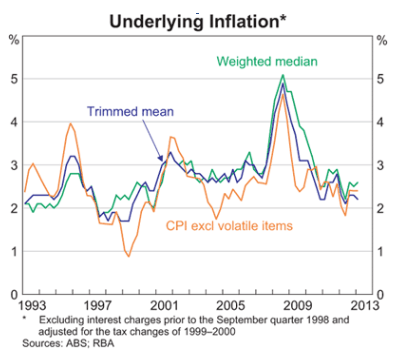
The key reason is that tradeable goods inflation, which comprises around 40% of the inflation basket, has been negative, offsetting strong non-tradeables inflation:
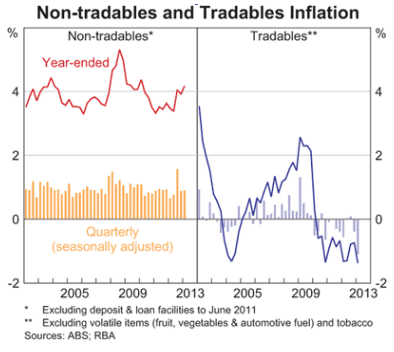
Tradeables inflation is low primarily because of the strength of the Australian dollar, which has suppressed import prices:
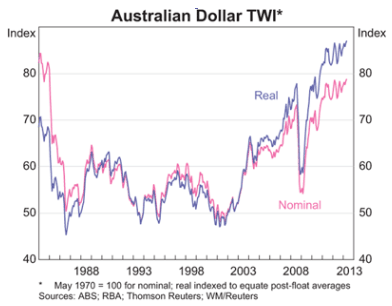
By failing to take action to supress the currency, the RBA has effectively sacrificed Australia’s non-mining exporters and export-competing firms (read manufactures) in order to keep inflation in check. In the process, however, the Australian economy has been hollowed-out, leaving it exposed as the mining boom unwinds.
In the event that the Australian dollar does fall, Australia could also face a sharp increase in inflation as the costs of imports (tradeables) rises. This could hinder the RBA from further lowering interest rates to support growth, unless of course it abandons its 2.0% to 3.0% inflation target.

